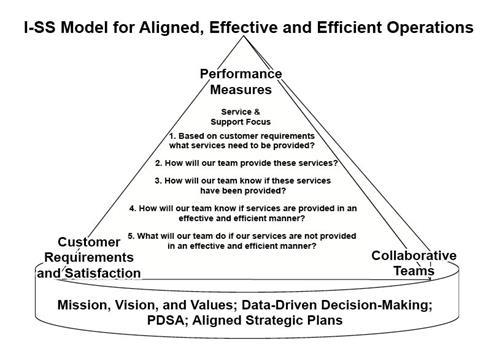Blogrige
The Official Baldrige Blog

Image used with permission
When Iredell-Statesville Schools (I-SS) earned a Baldrige Award in 2008, its dramatic turnaround story (featured in Baldrige 20/20, pp. 68-72) demonstrated the power of the Baldrige Education Criteria for Performance Excellence to transform a public school system that had been in crisis just six years earlier.
ver the past five years, the 21,231-student district in southwestern, North Carolina, has seen its economic-related challenges grow. Cuts in tax-based funding have amounted to millions shaved from annual education budgets. And the number of students poor enough to qualify for free and reduced-price school lunches has risen by 35 percent (to 43 percent of the student population).
Yet, according to Dr. Melanie Taylor, I-SS associate superintendent of curriculum and instruction, the district’s use of the Baldrige framework has helped it keep improving the efficiency of its operations and the effectiveness of its instructional programs. Those improvements, she affirmed, have enabled the district to weather the proverbial storm of decreased funding and increased student needs.
Taylor will be presenting on how to use the Baldrige Education Criteria for Performance Excellence to drive school and districtwide improvements at the Baldrige Program’s Quest for Excellence® Conference next week. For the benefit of Blogrige readers, she shared the following information in a recent interview.
If you were speaking to a school district that is just discovering the Baldrige Education Criteria as a tool to drive systemwide improvements, what would you suggest as your top three tips?
1. Talk with the staff involved: Help the staff to identify their priority areas for improvement, looking at the data you have to support that, and get them involved in identifying what the “big rocks” are. Sometimes it’s an easy win to get them involved in being part of the solution as well as identifying the problem. It’s not always what the leadership might see as a priority area; if workers see it as a major issue, then they tend to be more engaged in the improvement process and have more buy-in along the way.
2. Use the Baldrige Criteria and the Baldrige processes without using all the Baldrige terminology. Using language that is familiar to the workers is less overwhelming.
3. “Go slow to go fast”: Keep a pulse on your staff to see where they are in the transition process through both formal check-in meetings and informal conversations. You need to have a combination of that hard and soft data to monitor. You need some folks to tell you what the reality is on how things are going.
What are some key ways in which the Baldrige framework has benefitted Iredell-Statesville Schools?
The Baldrige Criteria has really helped us to align our processes and operate more effectively and efficiently as a school district. It has helped us improve our processes and make those processes more aligned and systematic. Our strategic plan and our school improvement plans and classroom plans are now aligned so that we’re all focusing on the same things, and we’re all clear on what our processes are to reach the targeted outcomes.
As a district 12 years ago, we had a lot of people who were doing good things, but they were random things. We didn’t really know what was working and what was not working. We didn’t have any good processes in place so that we could share and replicate things that were having a positive impact for students.
It’s important to note that our per-pupil expenditure has consistently been low—in the bottom 10 school districts out of 115 in the state (11th for the past couple of years)—so [using the Baldrige framework] has allowed us to do a lot of things very effectively with very low funding.
With all the cuts that public school districts all across the nation have right now, it’s really important to make sure that you’re using your funding in the most efficient and effective manner possible.
Despite cuts in funding—we’ve lost $12 million over the last five to six years—we’ve been able to expand programs and continue to increase our academic ranking and our graduation rate. And our academic performance has been improving even though we also have more students from economically disadvantaged families than we did six years ago.
Would you share more about your performance improvements and results?
Our graduation rate has improved from 61% in 2002 to 88.1% for 2013-2014, and our other metrics also show great growth. Our district’s academic ranking in the state moved from 55th in 2002 to 23rd best in 2013. Our students’ average SAT scores have moved us from a ranking of 57th in North Carolina in 2002 to 13th best in 2013.
In 2002, we had a negative fund balance of $2.5 million; because we have been able to operate more efficiently, our fund balance reached $8.76 million in 2013. As a result, we have been able to increase offerings for students, for example, high school credit recovery courses increased from 500 in 2002 to more than 1,000 in 2013.
How can other school districts learn more?
If a school district would like to contact us to learn more or come visit us to see what this looks like in action, we’d certainly be willing to share.
About the author
Related Posts
Comments
- Reply





